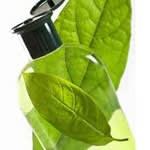 A new study has highlighted large differences in the rates of decomposition of different biodegradable plastics under both aerobic and anaerobic conditions. The results could influence decisions on how best to dispose of the materials.
A new study has highlighted large differences in the rates of decomposition of different biodegradable plastics under both aerobic and anaerobic conditions. The results could influence decisions on how best to dispose of the materials.Biodegradable materials are designed for breakdown into simpler compounds by naturally occurring microorganisms (microbes). Under aerobic conditions (with oxygen), microbes consume oxygen to decompose the polymers primarily into carbon dioxide and water. Under anaerobic conditions (i.e. without oxygen), different microbes decompose the polymers primarily into methane and carbon dioxide.
A team led by H S Cho of Seoul National University, South Korea, set out to decide the most appropriate means of disposal for two types of biodegradable polymer. The study, reported in the Waste Management journal, investigated how easily a poly(caprolactone) (PCL)-starch blend (used in food packaging, for example) and a poly(butylene succinate) (PBS) (used to produce disposable cups and cutlery, for example) decomposed. The biodegradation rates of both polymers under aerobic and anaerobic conditions were determined, and the effects of burying both these biodegradable polymers in a landfill were observed.
Comparative aerobic tests in the laboratory used microbes obtained from activated sludge from a local municipal sewage treatment plant in Seoul. Anaerobic tests used microbes from anaerobic sludge at the same plant.
There were significant differences between the degradation characteristics of the polymers. The aerobic experiments found that 88% per cent of PCL-starch blend was degraded in 44 days. In contrast, only 31% of the PBS polymer was degraded after 80 days. The PCL-starch blend degraded seven times faster than the PBS sample.
Under anaerobic experimental conditions, 83% per cent of the PCL-starch blend was degraded after 139 days, and only 2% of the PBS sample was degraded in 100 days.
Samples of the polymers were buried in a landfill site for 90 days, and the appearances of the surfaces were compared before and after burial. The surface of the PCL-starch blend was smooth before burial, but after 90 days in landfill, it was covered with pinhole-sized holes, suggesting significant physical and chemical degradation by microbes. The PBS surface was also no longer smooth after removal from landfill, but relatively few pinholes were observed.
This study suggests that PCL-starch could viably be disposed of by composting, either in landfill or in anaerobic digesters. The polymer might be pretreated using thermal, enzymatic, or ultrasonic techniques or the application of adapted microorganisms to reduce the volume of waste. The researchers concluded that further work is needed to find suitable disposal routes for the PBS biodegradable polymer.


